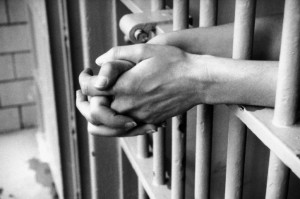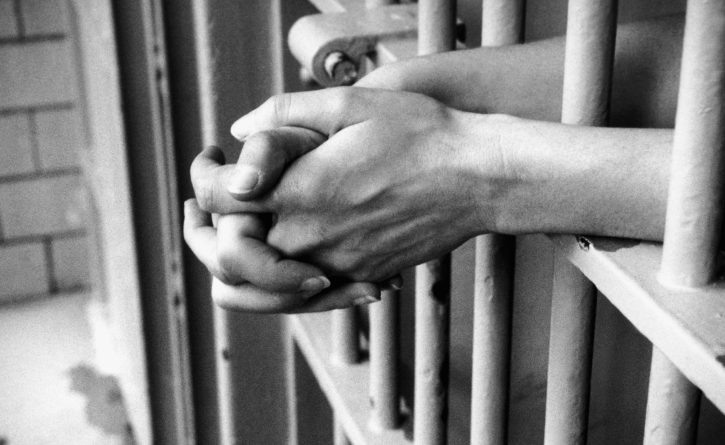The Challenges of Incarcerating Mentally Ill Inmates
December 7, 2015
By Michael Pittaro, Faculty Member, Criminal Justice at American Military University
inpublicsafety.com
The United States has 5 percent of the world’s population, yet we have 25 percent of the world’s prison population, with 2.2 million individuals confined within our nation’s jails and prisons. The percentage of incarcerated individuals with psychological or psychiatric disorders has been steadily increasing since the 1960s, which by most accounts stems mostly from the deinstitutionalization of the state mental health system.
 Prisons and jails have become the de facto state hospitals responsible for confining and caring for the mentally ill. There are more seriously and persistently mentally ill individuals imprisoned in correctional institutions today than in all U.S. state hospitals combined. This requires a major paradigm shift in thinking, practice, and policy: Prisons were never intended nor designed to cope with a tremendous influx of individuals with significant degrees of mental illness.
Prisons and jails have become the de facto state hospitals responsible for confining and caring for the mentally ill. There are more seriously and persistently mentally ill individuals imprisoned in correctional institutions today than in all U.S. state hospitals combined. This requires a major paradigm shift in thinking, practice, and policy: Prisons were never intended nor designed to cope with a tremendous influx of individuals with significant degrees of mental illness.
History of Confining the Mentally Ill
A Treatment Advocacy Center Study reports that people with mental illness were routinely confined in prisons and jails from 1770 to 1820. This practice was later regarded as inhumane and problematic, and in response, mentally ill individuals were routinely confined in psychiatric hospitals up until 1970. Since 1970, the United States has returned to the earlier practice of routinely confining mentally ill individuals in prisons and jails, which is once again regarded as inhumane and problematic.

A 2013 Mother Jones article provided a simplistic, yet informative timeline of caring for the mentally ill in the United States. For example, in 1773, the first patient was admitted to the Public Hospital for Persons of Insane and Disordered Minds in Williamsburg, Virginia. In 1955, the number of individuals confined in psychiatric facilities peaked at 560,000 patients (today, fewer than 35,000 patients are in psychiatric hospitals, a number that continues to fall). A few years later in 1962, Ken Kesey published One Flew Over the Cuckoo’s Nest, an international best-seller which was based largely on his experience working as a nurse in a psychiatric hospital during the 1950s. A year later in 1963, President John F. Kennedy signed theCommunity Mental Health Act to provide federal funding for the construction of community-based preventive care and treatment facilities. However, it was not until 1965 with the passage of Medicaid that states were “strongly persuaded” to move patients out of state mental hospitals. The Medicaid program excluded coverage for people in “institutions for mental diseases.” The deinstitutionalization movement had begun to take center stage.
As a direct result, state mental hospital populations went from 560,000 psychiatric patients in 1955 to 61,700 in 1996, a 90 percent decline. These patients were often released to the community without adequate support services, which led to many becoming entangled in the web of the criminal justice system. That has led to our current predicament of a growing social problem that continues to plague our nation’s prisons and jails.
[Related Article: Getting to the Heart of Issues Behind Mass Shootings]
Rate of Mental Illness Among Inmates
According to a March 2015 study by the Urban Institute, an estimated 56 percent of state prisoners, 45 percent of federal prisoners, and 64 percent of jail inmates have one or more psychological disorders. In 2014, the American Psychiatric Associationreported that the most common mental illnesses among prisoners are depression, schizophrenia, and bipolar disorder. While these conditions are not necessarily correlated with criminality, the frequency and intensity of these disorders are significantly higher within our nation’s prisons. That suggests the disorders may contribute, at least indirectly, to criminality. In addition, a higher percentage of prisoners have personality disorders than the general population, particularlyantisocial personality disorder, a diagnosis commonly associated with criminal behavior because it is characterized by a pattern of disregard for, and violation of, the rights of others. Lastly, prisoners are more likely to have been diagnosed with co-occurring disorders, which is defined as the presence of two or more disorders at the same time. For example, an individual may suffer from substance abuse or addiction as well as bipolar disorder. Co-occurring disorders, as would be expected, tend to be more difficult to treat because the illnesses can interact with each other, and treatment strategies for the varying disorders may conflict, according to the National Institute of Drug Abuse.
Lack of Services to Address Mental Illness
To reiterate, mentally ill offenders comprise a significant portion of the nation’s prison population, resulting in a number of challenges to prison administrators and correctional officers who lack formal training or education on how to interact, care for, and protect this particular population. Providing mental health, substance abuse, and medical treatment for these offenders is challenging, particularly when most prisons and jails are poorly equipped to appropriately deal with those with mental illnesses. Prisoners with mental illnesses are more likely than other prisoners to be held in solitary confinement, be financially exploited, physically and sexually assaulted, commit suicide, or be intentionally self-destructive.
[Related Article: Florida Corrections Pledges Reforms for Treatment of Mentally Ill Inmates]
A 2015 Washington Post article reported, “In New York, a man with schizophrenia spent 13 years of a 15-year prison sentence in solitary confinement. In a Minnesota county jail, a man with schizophrenia stabbed out both of his eyes with a pencil in his cell. A study of 132 suicide attempts in a county jail in Washington found that 77 percent of them had a ‘chronic psychiatric problem,’ compared with 15 percent among the rest of the jail population.”
To compound matters, there is growing evidence suggesting that both the size of the population and seriousness of their psychological disorders are increasing, so how should we, as corrections professionals, respond?
The best solution is for the United States to maintain an effective and efficient public mental health treatment system that reduces the number of mentally ill individuals who end up in prisons and jails. Moreover, in a comprehensive 2014 Treatment Advocacy Center Study, the following recommendations were introduced:
- Reform outdated or inadequate mental illness treatment laws and practices in the community to eliminate barriers to treatment for individuals too ill to recognize they need care, so they receive help before they are so disordered they commit acts resulting in their arrest, prosecution, and subsequent incarceration.
- Reform jail and prison treatment laws so inmates with mental illness can receive appropriate and necessary treatment, just as inmates with other medical conditions do.
- Implement and promote additional diversion programs such as mental health courts.
- Use court-ordered outpatient treatment to provide the support that at-risk individuals need to live safely and successfully in the community.
- Encourage comprehensive cost studies to compare the true costs of housing individuals with serious mental illness in prisons and jails to the costs of appropriately treating them in the community.
- Establish careful inmate intake screening to identify medication needs, suicidal thoughts and ideations, anger outbursts, self-destructive behaviors, and other risks associated with mental illness.
- Institute mandatory release planning to provide community support and foster recovery.
The aforementioned recommendations fall under the general premise that mentally ill individuals would be better served in hospitals, not in prison and jails; however, the public mental illness treatment system is essentially broken and in need of desperate repair that could only come from widespread reform. Until that occurs, our nation’s correctional institutions will continue to be flooded with mentally ill individuals who will find themselves trapped within a criminal justice system that is quite easy to enter, but quite difficult to leave.
 About the Author: Professor Michael Pittaro is a 27-year criminal justice veteran, highly experienced in working with criminal offenders in a variety of settings. Pittaro has lectured in tertiary education for the past 13 years while also serving as an author, editor, and subject matter expert. He is currently pursuing a Ph.D. in public safety/criminal justice at Capella University’s School of Public Safety Leadership.
About the Author: Professor Michael Pittaro is a 27-year criminal justice veteran, highly experienced in working with criminal offenders in a variety of settings. Pittaro has lectured in tertiary education for the past 13 years while also serving as an author, editor, and subject matter expert. He is currently pursuing a Ph.D. in public safety/criminal justice at Capella University’s School of Public Safety Leadership.

